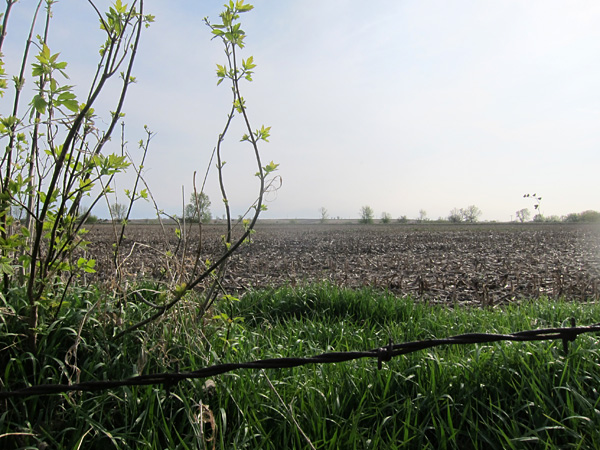DES MOINES — Plenty of winter precipitation has ended drought conditions at this time in Iowa, setting farmers up for a prosperous growing season.
 This month’s Water Summary Update introduces the use of the 2023 Iowa Drought Plan (IDP). Of the States’ five drought regions, only northwest Iowa is currently shown in Drought Watch, while the balance of the state is considered normal. February marked the fourth month in a row of above normal precipitation, and the winter months of December, January, and February were the fourth wettest on record. Precipitation for the month was 2.04 inches, 0.87 inches above normal, making the month the 7th wettest February on record for Iowa. Streamflow conditions increased across the majority of the state from normal to above normal conditions, with soil moisture levels also showing improvement.
This month’s Water Summary Update introduces the use of the 2023 Iowa Drought Plan (IDP). Of the States’ five drought regions, only northwest Iowa is currently shown in Drought Watch, while the balance of the state is considered normal. February marked the fourth month in a row of above normal precipitation, and the winter months of December, January, and February were the fourth wettest on record. Precipitation for the month was 2.04 inches, 0.87 inches above normal, making the month the 7th wettest February on record for Iowa. Streamflow conditions increased across the majority of the state from normal to above normal conditions, with soil moisture levels also showing improvement.
“The winter months of December, January, and February were well above normal, providing well over 5 inches of moisture across the state. This is just what we needed for drought improvement in Iowa,” said Tim Hall, Iowa Department of Natural Resources’ coordinator of hydrology resources. “As we begin to use the new Iowa Drought Plan, only northwest Iowa is an area of ‘Drought Watch’ for the state, which is good news.”
For a thorough review of Iowa’s water resource trends, go to www.iowadnr.gov/watersummaryupdate.
The report is prepared by technical staff from Iowa DNR, the Iowa Department of Agriculture and Land Stewardship, IIHR—Hydroscience and Engineering, and the U.S. Geological Survey, in collaboration with Iowa Homeland Security and Emergency Management Department.
The Iowa Department of Natural Resources has finalized a drought plan for use by local, county, state agencies and governments in the event of droughts in the state.
The Iowa Drought Plan was developed in partnership with the Iowa Department of Homeland Security and Emergency Management and the Iowa Department of Agriculture and Land Stewardship. The plan aims to provide the state with an approach to prepare for, identify, respond to and recover from a drought.
“Just as we must be prepared for floods, tornadoes, and winter storms, we also must be prepared for the impacts of drought in Iowa,” said John Benson, director of the Iowa Department of Homeland Security and Emergency Management. “The Iowa Drought Plan, the result of a collaboration between state agencies and a broad range of stakeholders throughout Iowa, is the blueprint we will use to ensure the state is able to address the challenges of drought preparedness, response and recovery.”
Droughts pose serious challenges to Iowa and many of its industries including agriculture and manufacturing, threatening the health of its residents and the state’s environment and economy. The Iowa Drought Plan will provide statewide drought condition evaluations and will give stakeholders and the public information on risk assessment and mitigation measures.
“This plan should provide a way to better communicate drought conditions to Iowans and allow for a consistent response across our state by multiple agencies,” said DNR Hydrology Resources Coordinator Tim Hall.
The plan designates five drought regions for the state, since different areas of the state vary in drought vulnerability due to groundwater resources and rainfall totals. Each region’s condition will be evaluated using four drought categories: Normal, drought watch, drought warning or drought emergency. Drought levels will be determined based on precipitation, the Standardized Precipitation Index, which is based on accumulated rainfall over time, the U.S. Drought Monitor and a standardized streamflow index, which compares current streamflow to the historical record.
“After three years of widespread drought conditions across the state, we have fortunately started to see improvements due to a more active weather pattern,” said Iowa Secretary of Agriculture Mike Naig. “Because Iowa did not have a plan before the start of our current drought, the Iowa Drought Plan was developed to be forward-looking and aimed at improving and standardizing our response across agencies in state government. Iowa farmers and agricultural stakeholders were asked to provide feedback at several in-person and virtual meetings last year and we believe the Iowa Drought Plan encompasses their valuable input.”
The DNR, Iowa Department of Homeland Security and Emergency Management and the Iowa Department of Agriculture and Land Stewardship make up the Drought Coordinating Team responsible for coordinating messaging on drought levels and conditions. The team will update the plan every five years.
More information and the full plan can be found online at IowaDNR.gov.









